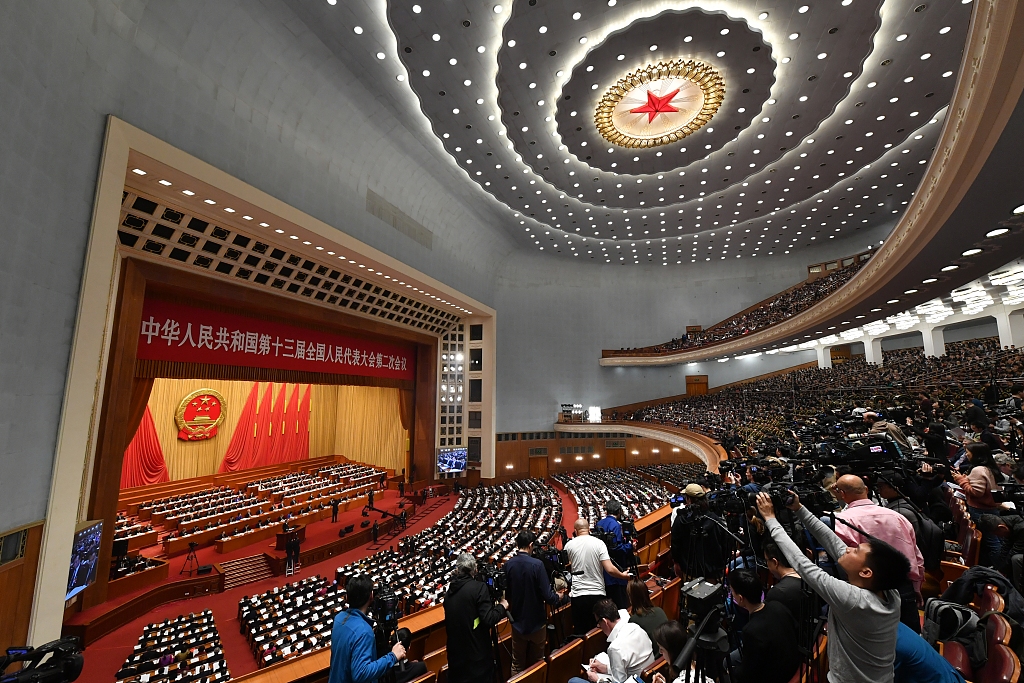
(Photo: VCG)
Chinese Premier Li Keqiang delivered the Report on the Work of the Government Tuesday at the Second Session of the 13th National People’s Congress of the People’s Republic of China.
Li reviewed the achievements in 2018 and revealed the targets and priorities for 2019.
Achievements in 2018
According to the report, the main economic indicators of China were kept within an appropriate range in 2018 that China’s GDP grew by 6.6 percent, exceeding 90 trillion yuan, while consumer prices rose by 2.1 percent.
In 2018, a further 13.61 million urban jobs were added and the unemployment rate remained stable at a relatively low level of around 5 percent, Li said.
Li also mentioned other achievements, including improved economic structure, new growth drivers, new breakthroughs in reform and opening up, the battle against potential risks, poverty and pollution, and improved living standards of the Chinese people.
Targets set for 2019
The main targets for economic and social development set for 2019 were revealed in the report, which are “ambitious but realistic.”
The GDP growth is projected to be 6-6.5 percent with a reduction of around 3 percent in energy consumption per unit of GDP. And the CPI will be at 3 percent in 2019.
China hopes to create over 11 million urban jobs, with a surveyed urban unemployment rate of around 5.5 percent, and a registered urban unemployment rate within 4.5 percent.
China is going to relieve over 10 million more rural people from poverty.
Priorities and crucial work in 2019
In the report, priorities were made and crucial issues were addressed to deliver a solid performance across the board.
China will implement large-scale tax cuts by reducing the current rate of 16 percent in manufacturing and other industries to 13 percent, and reducing the tax burden on social insurance contributions of enterprises by nearly 2 trillion yuan.
China will expand effective investment, with 800 billion yuan to be invested in railway construction and 1.8 trillion yuan in road construction and waterway projects.
This year, sulfur dioxide and nitrogen oxide emissions will be cut by 3 percent, and there will be a continuous decline in PM2.5 density in key areas. Water and soil pollution prevention and control will be strengthened.
Capital markets will be reformed to promote the healthy and steady development of a multi-tiered system.
China will further relax controls over market access, shorten the negative list for foreign investments, and permit wholly foreign funded enterprises to operate in more sectors.
China will grant greater autonomy to pilot free trade zones to carry out reform and innovation, expand the China (Shanghai) Pilot Free Trade Zone, step up the building of the China (Hainan) Pilot Free Trade Zone, and explore the opening of a free trade port with Chinese features. China will advance negotiations on the Regional Comprehensive Economic Partnership, the China-Japan-RoK Free Trade Agreement, the China-EU investment agreement, and continue to promote China-US trade negotiations.
(Compiled by Qiao Wai, Wang Zi and He Jieqiong)


